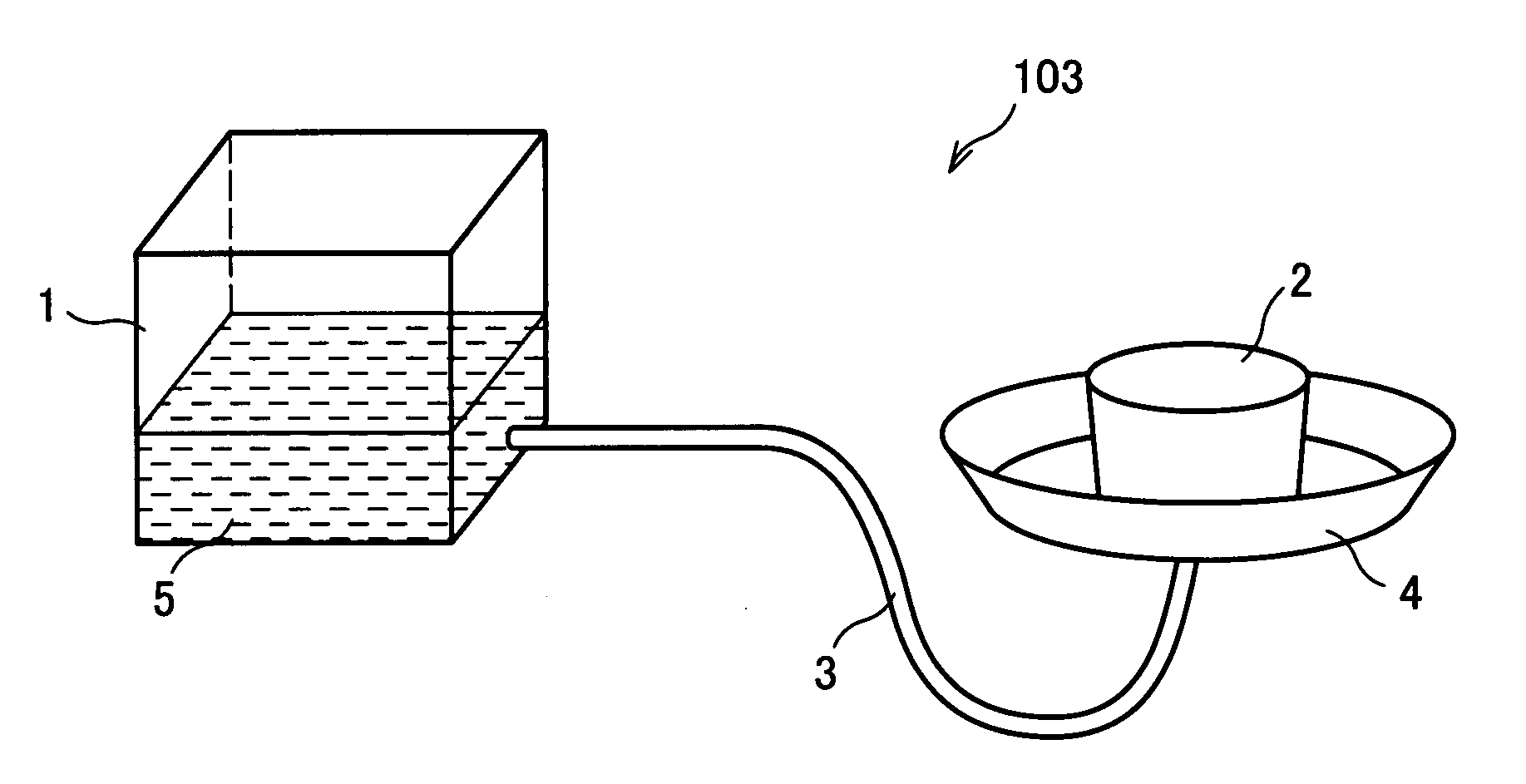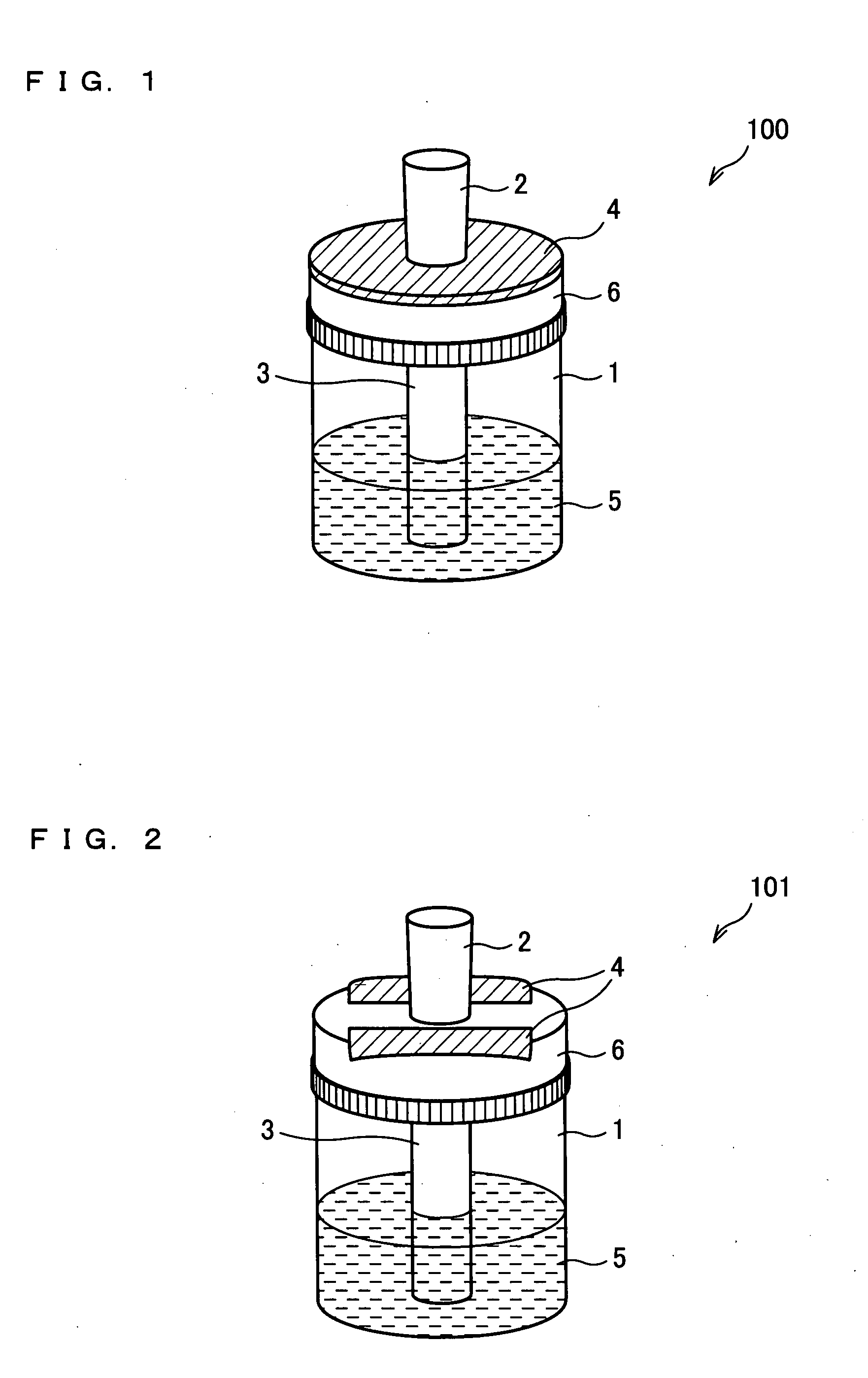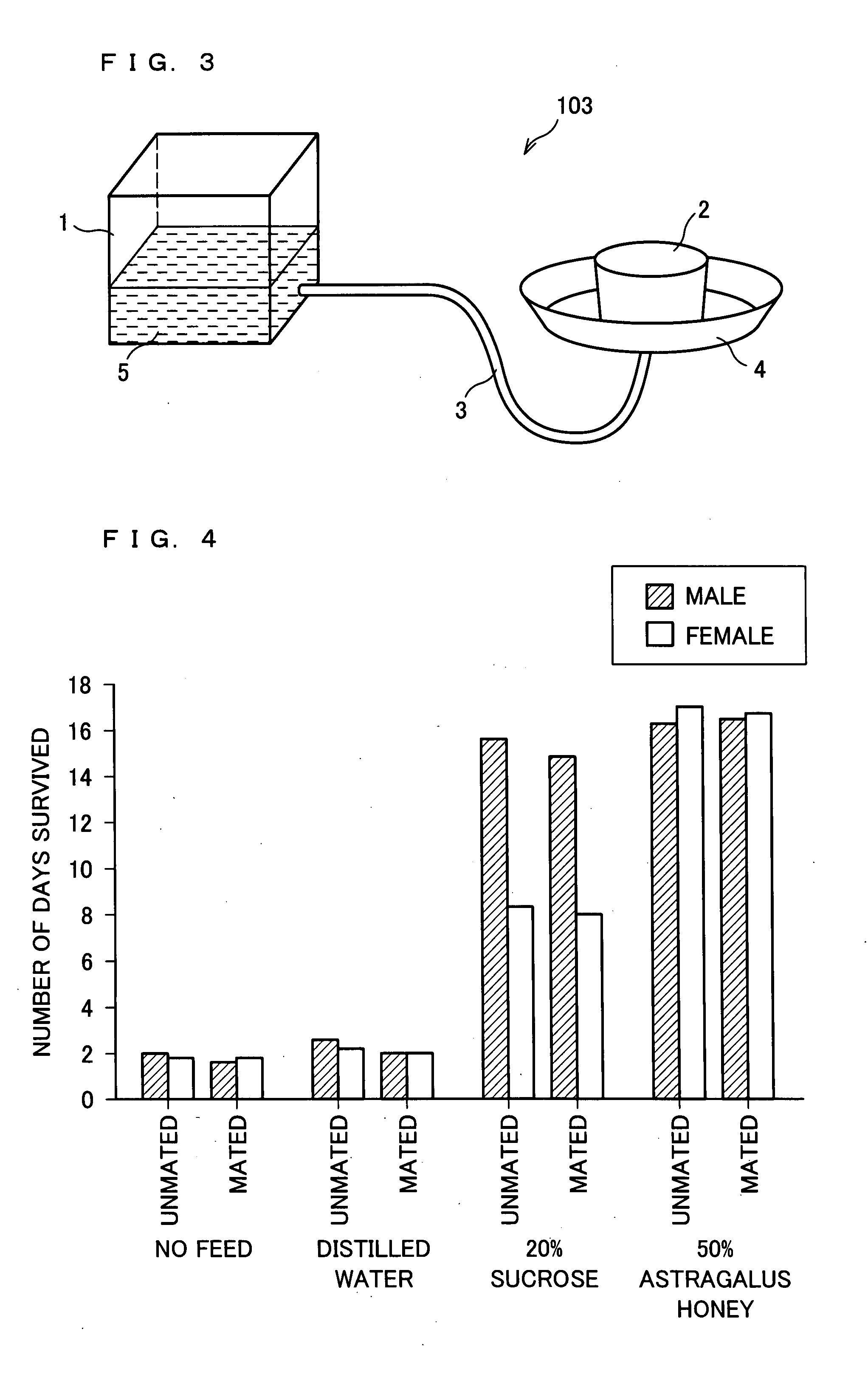Feeding Method And Apparatus For Breeding Natural Enemy Insects And Rearing Method For Breeding Natural Enemy Insects
a technology for natural enemies and feeding methods, applied in the field of feeding methods and equipment for breeding natural enemies, can solve the problems of difficult insecticide control of garden insect pests, difficult to control insecticides for garden insect pests, chemically synthesized insecticides exerting harmful effects on human body, environment, etc., and achieves efficient breeding. , the effect of raising the percentage of parasites
- Summary
- Abstract
- Description
- Claims
- Application Information
AI Technical Summary
Benefits of technology
Problems solved by technology
Method used
Image
Examples
example 1
Influence of Feeding on the Number of Days for which Parasitic Wasps Survive
[0086]FIG. 4 shows the influence of feeding on the number of days for which adult Cotesia plutellae males and females survive. Under such circumstances that no food is given (see “NO FOOD” or “DISTILLED WATER” in the figure), there is not a difference between the number of days for which unmated wasps survived and the number of days for which mated wasps survived, nor is there a difference between the number of days for which male wasps survived and the number of days for which female wasps survived. However, the supply of 20% sucrose allowed males to survive two weeks or longer, and females to survive one week or longer. Furthermore, the supply of 50% Astragalus honey allowed both males and females to survive two weeks or longer. Thus, it was found that food is a key to the survival of Cotesia plutellae and that Cotesia plutellae can only survive up to one day without food.
example 2
Change in the Percentage of Parasitism by Parasitic Wasps due to a Difference between Feeding Apparatuses
[0087]A feeding apparatus (named Hachigenki) shaped as shown in FIG. 5 was used to examine whether or not parasitic wasps can be efficiently fed in a relatively wide space such as a greenhouse. A total of 25 feeding apparatuses (named Hachigenki) were provided in a greenhouse with the dimensions 7 m×7 m×3 m so as to be placed 5×5 at intervals of 30 cm. A total of 100 second-instar diamondback moth larvae were diagonally released by 20 in the greenhouse, and a total of 10 Cotesia plutellae (females) were released into the greenhouse. The percentage of parasitism measured one day after the release was compared with the percentage of parasitism measured three days after the release.
[0088]The percentages of Cotesia plutellae, fed with 50% Astragalus honey, which had parasitized the diamondback moths were measured in cases where a plastic plate having a tone of white was used as an at...
example 3
Change in the Percentage of Parasitism due to the Location in which a Feeding Apparatus is Placed
[0091]A study was conducted to examine at what height a feeding apparatus (named Hachiganki) is preferably placed. Specifically, the percentages of parasitism by parasitic wasps were measured in cases where a feeding apparatus (named Hachigenki) shown in FIG. 5 was placed at a height of 50 cm above the ground and where it was placed at a height of 2 m above the ground.
TABLE 2Percentage of ParasitismPercentage of ParasitismMeasured One Day afterMeasured Three Daysthe Releaseafter the Release2 m above78.511.2the Ground50 cm above86.379.8the Ground
[0092]As shown in Table 2, it was found that the feeding apparatus (named Hachigenki) is preferably placed at a height of 50 cm above the ground.
[0093]The embodiments and concrete examples of implementation discussed in the foregoing detailed explanation serve solely to illustrate the technical details of the present invention, which should not be...
PUM
 Login to View More
Login to View More Abstract
Description
Claims
Application Information
 Login to View More
Login to View More - R&D
- Intellectual Property
- Life Sciences
- Materials
- Tech Scout
- Unparalleled Data Quality
- Higher Quality Content
- 60% Fewer Hallucinations
Browse by: Latest US Patents, China's latest patents, Technical Efficacy Thesaurus, Application Domain, Technology Topic, Popular Technical Reports.
© 2025 PatSnap. All rights reserved.Legal|Privacy policy|Modern Slavery Act Transparency Statement|Sitemap|About US| Contact US: help@patsnap.com



